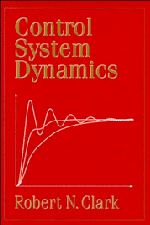Book contents
- Frontmatter
- Contents
- Preface
- 1 Introduction to Control System Engineering
- 2 Mathematical Models of Mechanical Systems
- 3 Mathematical Models of Electrical Systems
- 4 Mathematical Models of Electromechanical and Electrohydraulic Systems
- 5 Summary of Modeling Principles for Physical Systems
- 6 Solution to the Initial-Value Problem
- 7 Pole-Zero Methods of Analysis for Single-Input-Single-Output Systems
- 8 Automatic Feedback Control
- 9 Dynamic Analysis of Feedback Control Systems
- 10 Design of Feedback Control Systems
- 11 Frequency Response Analysis of Linear Systems
- 12 Stability Analysis by Nyquist's Criterion
- 13 Dynamic Analysis of Feedback Systems by Frequency Response Methods
- 14 Design of Feedback Systems by Frequency Response Methods
- 15 Advanced Topics
- Appendices
- Answers to Problems
- Bibliography
- Index
7 - Pole-Zero Methods of Analysis for Single-Input-Single-Output Systems
Published online by Cambridge University Press: 05 June 2012
- Frontmatter
- Contents
- Preface
- 1 Introduction to Control System Engineering
- 2 Mathematical Models of Mechanical Systems
- 3 Mathematical Models of Electrical Systems
- 4 Mathematical Models of Electromechanical and Electrohydraulic Systems
- 5 Summary of Modeling Principles for Physical Systems
- 6 Solution to the Initial-Value Problem
- 7 Pole-Zero Methods of Analysis for Single-Input-Single-Output Systems
- 8 Automatic Feedback Control
- 9 Dynamic Analysis of Feedback Control Systems
- 10 Design of Feedback Control Systems
- 11 Frequency Response Analysis of Linear Systems
- 12 Stability Analysis by Nyquist's Criterion
- 13 Dynamic Analysis of Feedback Systems by Frequency Response Methods
- 14 Design of Feedback Systems by Frequency Response Methods
- 15 Advanced Topics
- Appendices
- Answers to Problems
- Bibliography
- Index
Summary
Introduction
We now develop methods for calculating the dynamic response of a linear system that is modeled by its transfer functions. The response depends upon the physical parameters of the system, the input function, and any nonzero initial conditions. We are particularly interested in relating the dynamic features of the response to the physical properties of the system. If the input is a step function, the response may fluctuate temporarily and eventually reach a constant value. The nature of the fluctuations – the length of time during which they persist, and whether they cause the response to overshoot its final value excessively or to oscillate with both positive and negative values – are dynamic features of vital importance. The initial values of the response and its derivatives and the final value of the response are also important characteristics that depend on the physical parameters. In simple systems with simple inputs – for example, a firstor second-order system with a step input – the dynamic features of the response are directly related to simple combinations of the parameter values. But in higher-order systems these important relationships are less obvious because the significant dynamic features of the response depend on complicated combinations of the parameter values. We must now employ a mixture of analysis tools, computer calculations, and approximation techniques to determine which of our system parameters have the most influence on the significant dynamic features of the response.
- Type
- Chapter
- Information
- Control System Dynamics , pp. 137 - 188Publisher: Cambridge University PressPrint publication year: 1996

